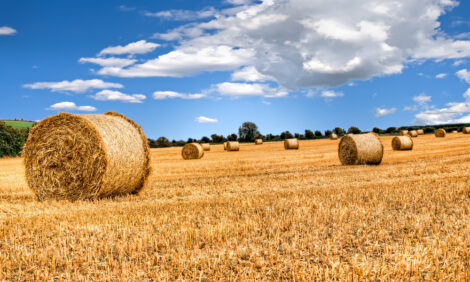



What Did the US Cattle-on-Feed Report Really Tell Us?
ANALYSIS - On Friday, July 19th the USDA issued their latest cattle-on-feed report. The report confirmed that total cattle on-feed stand at 10.368 million, down 3% from on-feed numbers one year ago, writes Dennis Smith, Archer Financial Services.Placements during the June were reported at 1.587 million animals or down 5% from actual placements in June of 2012. Finally, marketing of cattle during June, at 1.895 million, were also down 5% from cattle marketed during June of 2012. The report did not contain any surprises and generally confirmed the tight supply of finished cattle expected down the road.
Beef production for 2013 is projected to decline by 2.3% compared to 2012 with projections for production in 2014 to decline by 5% versus production this year.
The recent cattle-on-feed report is not expected to alter these projections in any meaningful way.
One interesting aspect of the cattle-on-feed report was the weight break down of the cattle placements. The data showed that the industry continues to place heavy weight, yearling type cattle in the feed yards while reducing placements of light weight calves.
Specifically, during June, placements of calves weighting 800 pounds or more were up 26% compared to June of 2012. Placements of calves in the 700 pound to 800 pound category were up 6%. At the light end of spectrum, placements were down 27% for calves weighing 600 to 700 pounds and down 32% for light weight calves, those weighing less than 600 pounds.
It's fairly easy to understand the logic behind declining placements of light weight calves. The improving weather pattern in much of the nation has also improved pasture conditions dramatically, especially when compared to what was occurring last year.
The latest data showed that 73% of the nation's pastures are in fair to excellent condition. In addition, the sharp discount of new crop corn futures compared to old crop is encouraging the delay of placements until lower feed prices become available.
In the face of record strong corn basis (at least until Thursday) and near record high old crop corn prices, it's much more difficult to comprehend the logic behind active placements of heavy weight cattle into the feed yards. Active placements of heavy weight cattle have been occurring for several months, not just in June.
Placements of 800 pound calves during the March through June period are up 17.5% compared to placements in 2012. Most of these cattle, depending on the exact weight when going into the feed yard, will be finished and slaughtered before new crop corn becomes available. Thus, given recent trends in feeder cattle prices and cash steer market prices, expected close-outs on these placements is expected to garner a loss.
The most logical answer to the aggressive behavior in placing heavy weight calves is the tight supply of feeder cattle available at the auction barns. Recall that our calf crop is the smallest in about sixty years. Also, imports of feeders from Mexico have been declining this year. Data as of July 6th indicate that cattle imports from Mexico are down 45% compared to the same period last year. Thus, in the southern plains, this is creating an extremely tight supply at local auction barns.
Evidently, as noted above due to improved pasture conditions and the outlook for lower corn prices this fall, what is available at the auction barns is mostly heavy weight calves. When competition in an auction environment heats up, prices tend to firm up, sometimes regardless of profit/loss motives. This tends to explain how feeder cattle prices have been firming upward despite what would appear to be a guaranteed loss on the eventual close out.
The cattle industry has been losing money on fed close outs since May of 2011. It appeared, earlier this spring; the massive loss of equity in the industry was having a direct impact on the prices paid for replacement cattle at the auction barns. The improving weather conditions and positive outlook for the developing corn crop appeared to have altered the behavior at most sale barns. The aggressive behavior bottomed out feeder cattle prices in May with the uptrend in prices continuing in June.
Now, with nearly ideal weather conditions for the developing corn crop and with the latest weakness in the old crop corn price including the dramatic weakening in the basis, the table is likely set for another major leg upward in feeder cattle prices into the fall time frame.
Dennis Smith publishes a widely read and highly respected "daily livestock wire". If you would like to sign up for a free 30-day trial please send Dennis an email to [email protected] or call him directly at 1.877.377.7905.
Futures and options trading involve significant risk of loss and may not be suitable for everyone. Therefore, carefully consider whether such trading is suitable for you in light of your financial condition. The views and opinions expressed in this letter are those of the author and do not reflect the views of ADM Investor Services, Inc. or its staff. The information provided is designed to assist in your analysis and evaluation of the futures and options markets. However, any decisions you may make to buy, sell or hold a futures or options position on such research are entirely your own and not in any way deemed to be endorsed by or attributed to ADMIS. Copyright © ADM Investor Services, Inc.

TheCattleSite News Desk


